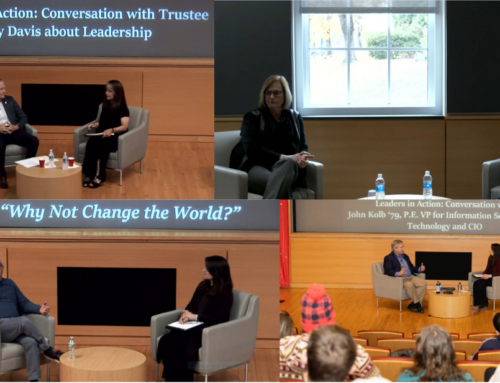By Aric Krause, Dean of Rensselaer at Work Programs
Leaders of organizations — large and small — describe their vision of a day when data is easily accessed and evaluated with confidence, resulting in better business decisions at every level of their organizations. But that vision requires a continued effort to make individual decision-makers fluent data users. Are we getting there? 2020 tells us we must double our efforts.
Organizations are ready to harness the power that data can give them, but first they have to finish transforming themselves — process-wise, systems-wise, and operationally — so that the data required for modeling problems and answering questions is available when and where it is needed. Then, they must take the final, crucial step of preparing decision-makers at all levels of their organizations with data capabilities. The goal is only achieved when the end users can fully and smartly employ the intelligence available in the data.
When portions of an organization’s system are still analog, it is like trying to describe a landscape with a blindfold on. Without the relevant data to see how the system acts and reacts as variables change, the decision-maker will not have optimal insight. In turn, models won’t be as robust as needed, no matter how sophisticated the infrastructure, how complex the techniques, or how current the tools.
Employers have been trying to move from analog to digital for a while now. 2019 was about creating visions as to what that could look like and what it would enable them to do. But 2020 is driving the point home and then some. What is glaringly apparent is the urgency to move beyond the vision and transform the people who need to use and interpret data within the context of day-to-day decisions.
Analysis of data can bring companies closer to their customers, allowing them to gain true insight as to where they are today and how they may be shifting going forward. 2020 has demonstrated the necessity for organizations to respond to rapid change on a dime. Responding to change boldly and efficiently can only be accomplished when decision-makers have the capacities to use the full value of the data made available through prior investments in data infrastructure and software tools.
When an organization says it’s ready to up its data game, the most crucial step is to prepare the decision-makers. A very apt comparison would be to invest in a sophisticated upgrade of a kitchen in your home — and not know how to cook. The “sophisticated kitchen” is the infrastructure and tools organizations have been investing in for years. Now, it’s a matter of strategically developing and placing “cooks” all over organizations with budget responsibility and the ability to use and interpret data to make strategic decisions with greater impact. It is those individuals who must be able to prepare, analyze, and interpret data results to make decisions that have the highest probability of moving their unit — and organization — in the right direction.
Not only can data analysis solve business problems, it can also inform you of issues before they are glaring. Of course, the “tree” benefits are there as well — greater efficiencies and reduced costs, for example. But 2020 has given us a clear glimpse of what the “forest” looks like when business leaders develop the talent to improve, grow, and sustain their organizations.




